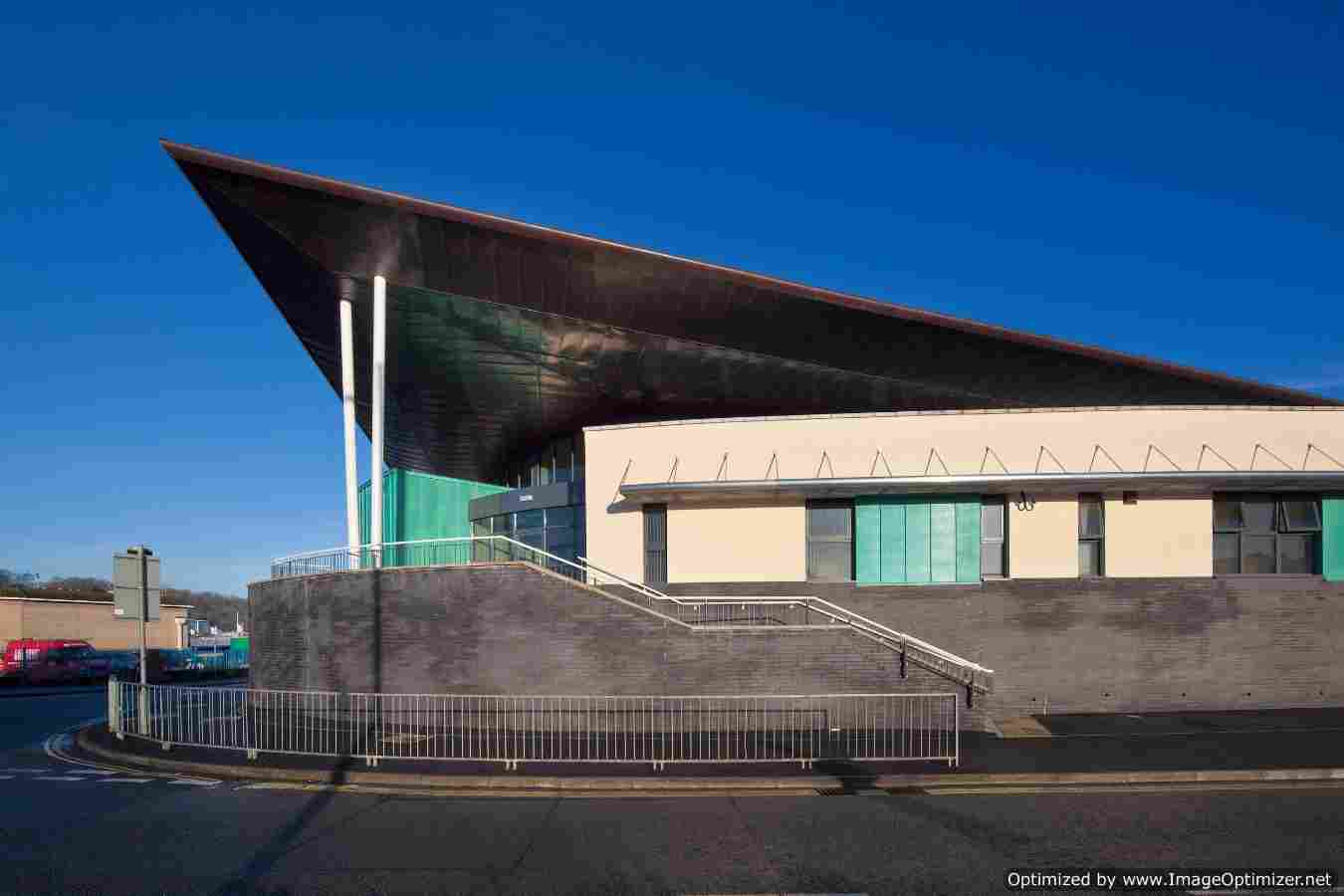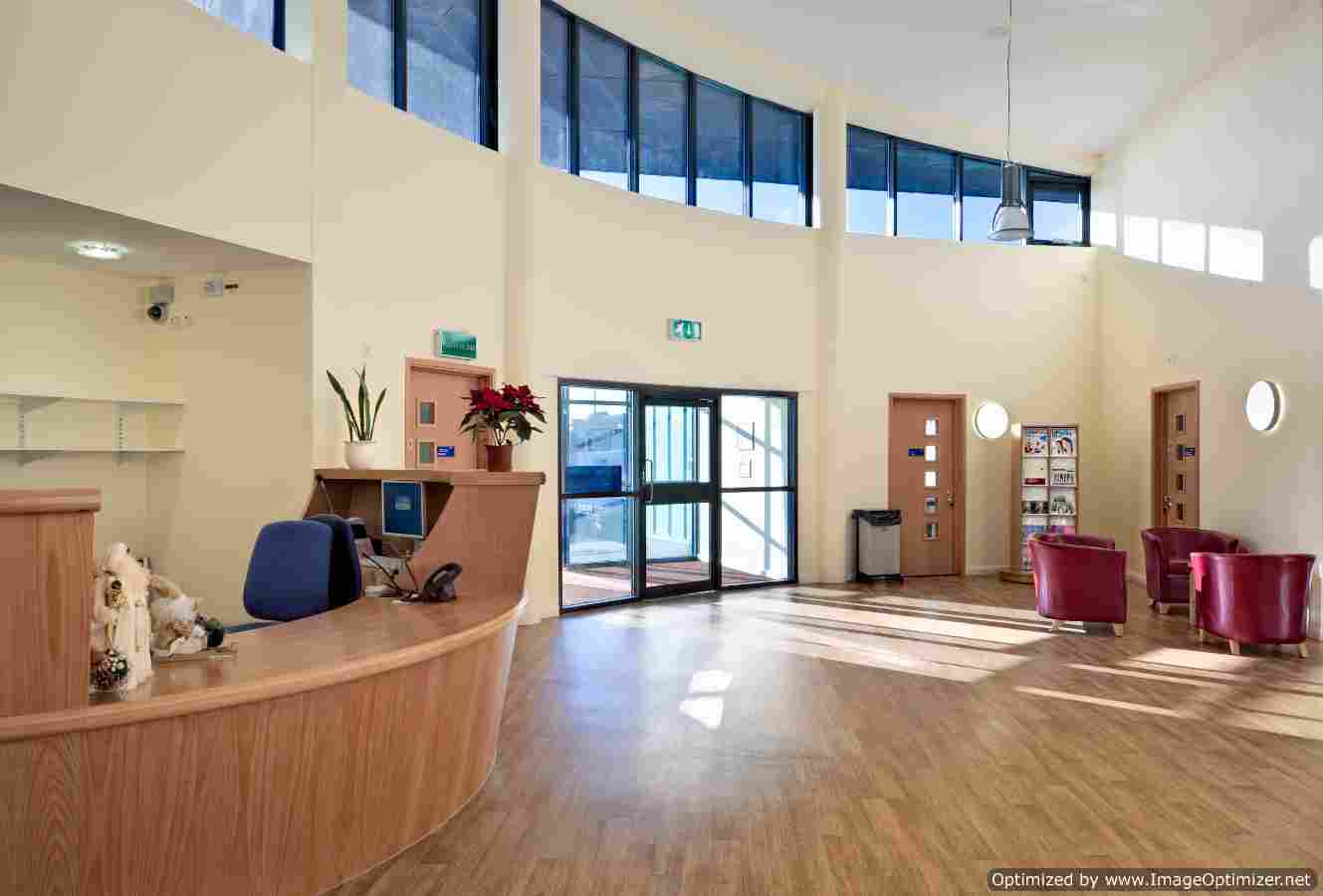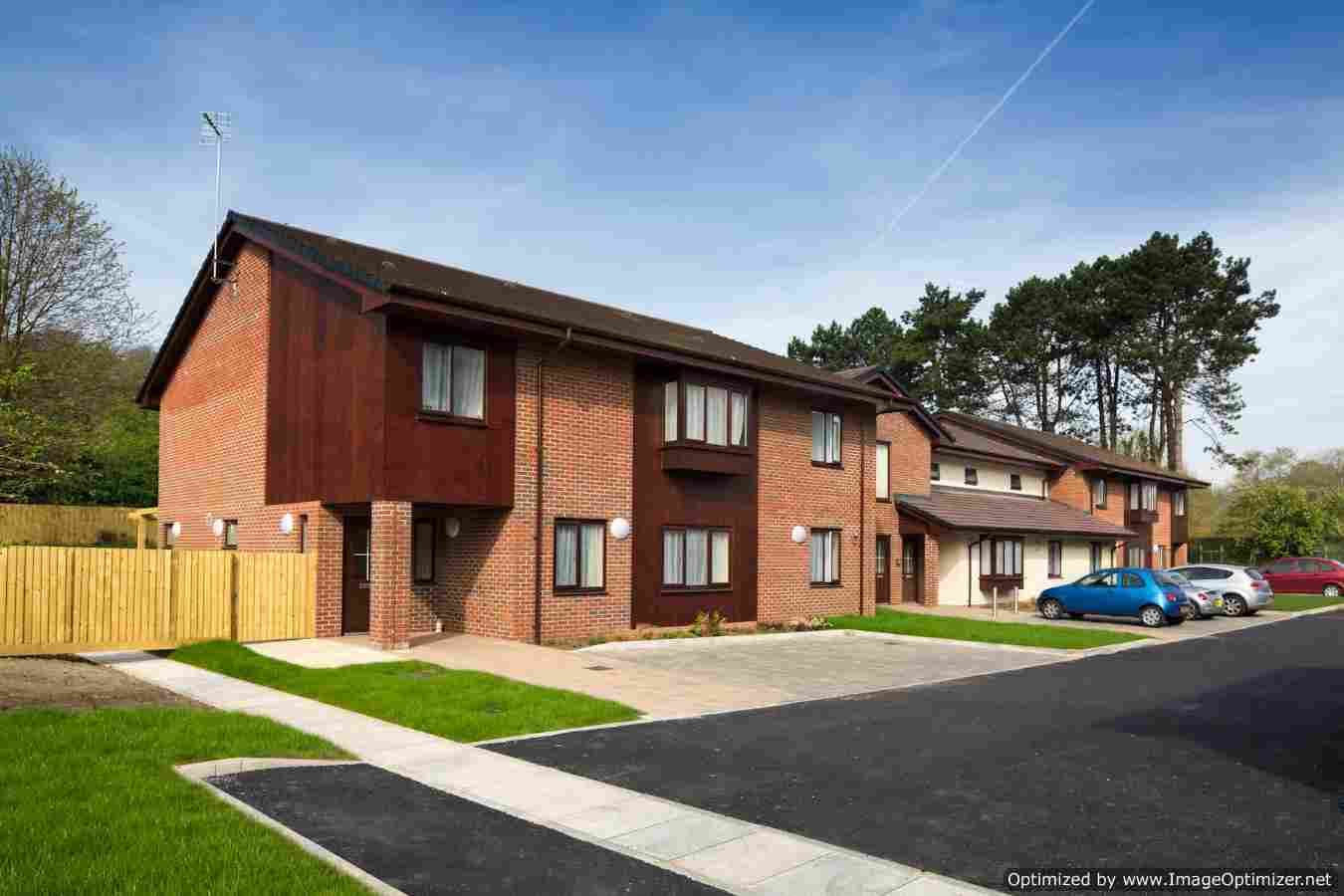Asked to describe a traditional mental health environment, you would be forgiven for conjuring up visions of grey monolithic institutions surrounded by high security fences topped with rolls of barbed wire.
Sadly, until recently these were not a rare sight as mental health problems remained shrouded in stigma and an understanding that sufferers needed to be locked away from society for everyone's safety.
However, increasingly this view has begun to change, and there is now a growing belief that, rather than keeping people locked away in prison-like buildings, the surroundings in which they are cared for can actually play an important role in their recovery.
This is particularly true in Wales, where the Abertawe BroMorgannwg University Health Board has embarked on an overhaul of its mental health services, from impatient wards to community support facilities, in the 'suicide hotspot' of Bridgend.
We wanted to create an environment that could be perceived as homely and something that, when patients are staying there, loses the constant clinical references
Helping the trust to realise its vision of a modern mental health system, was architects firm, Stride Treglown, which has designed three very different units, aimed at both enhancing the environment in which patients are cared for and, maybe just as importantly, helping to improve understanding among local communities.
The result is the Angelton Clinic at Glanrhyd Hospital, the Assisting Recovery in the Community (ARC) Centre in Ty R Ardd, and a new rehabilitation unit in Quarella Road.
"Our main brief in terms of design came from our clients and their care pathway," explained Stride Treglown regional director, Darren Wilkins.
"The trust wanted the designs to be open, airy and homely and without the institutional feel these buildings usually have. We wanted to create an environment that could be perceived as homely and something that, when patients are staying there, loses the constant clinical references. "The buildings still allow for the right levels of observation and safety, but in a less obvious way. The days of mental health buildings with big thick walls and high fences should be way behind us."
The Angelton Clinic, a 42-bed continuing care unit with a challenging behaviour ward, opened in January and provides support for elderly people with mental health problems, including dementia. Located in the Victorian setting of Glanrhyd Hospital, the design team was keen to make the site safe and secure, but in an unobtrusive way. As a result, there are no high fences. Instead, the design of the facility is such that it provides access to landscaping and fresh air via five internal courtyards.
The days of mental health buildings with big thick walls and high fences should be way behind us
Wilkins explained: "There are constant references on the site to an old generation of care and that was all about safe enclosure and the old asylum model. Patients did not have the freedom to roam the grounds and enjoy open views. One of the key drivers for us was that this was a lovely site and we wanted it to be secure, but we also wanted to be able to celebrate the open grounds and nice landscaping. We didn't want to build something lovely, but then put up massive fences, and that was a big issue for us. When you look outside the first thing you would see is not the beautiful grounds, but the fences and thus a constant reminder of where you are. From very early on the designs showed enclosed courtyards. This means residents have the freedom to roam in a secure environment where they can be observed, and we have not had to put up huge fences. From the windows in their rooms and the communal areas they now have an unobstructed view over the landscape; views of things that could be therapeutic."
To enable residents to open and close windows to get fresh air, but without the risk of contraband being passed in or the fittings being used to attach a ligature to, the designers commissioned special windows from Britplas. The design was adapted to enable staff to see quickly from the outside whether windows were open or closed. And the inbuilt mesh means residents are safe, but can still enjoy a feel of the outdoors.
The design brief was to take mental health care into the community and give it a high profile and to get people to talk about it. The result is a bespoke building that is an advert for itself and its use, bringing normal people into contact with mental health issues. Internally all rooms are en-suite and the whole building has been designed with flexibility in mind, allowing room functions to change over time. Colours were also a consideration and, while muted shades have been used throughout, bright colour swatches denote the different areas, which is particularly useful for residents with memory problems.
Wilkins said: "The graphics denote personal living spaces, communal areas and water-based facilities such as bathroom and toilets. There are also wander loops designed into all but two wards, which bring residents into contact with indoor and outdoor spaces, enclosed and spacious areas. There are changing environments, but also you always know where you are."
A Victorian water tower on the site has also been refurbished to house a mechanical plant to service the building. Following the care pathway through, the second development was the ARC Centre, which provides adults with mental health problems structured support and activities ranging from social and leisure services to education and employment training.

The design for this building took inspiration from the vision of 'access to multiple facilities under one roof'. Wilkins said: "The brief was for a single-storey building that had flexible spaces. The site also had to deliver the local authority's aspiration of a gateway building to the town centre. As a result of these drivers, the building has been designed to raise the profile of mental health in South Wales.
Despite mental health issues touching many families, there is still a resistance to these facilities within local communities
"A large inclined copper roof gives the building a height and presence that also offers protection and shelter, and the curved plan responds to the site geometry and pushes the public face to the perimeter of the site. One aim of this is to encourage the local community to find out more about mental health and try to erase the 'not in my back yard' stigma attached to living in the shadow of a psychological facility.

Wilkins said: "Despite mental health issues touching many families, there is still a resistance to these facilities within local communities. During this project we worked with residents to produce a facility that was sympathetic to the adjacent housing, the residents of which have since praised the building for respecting their privacy and responding to their domestic-scale properties.
"The design brief was to take mental health care into the community and give it a high profile and to get people to talk about it. The result is a bespoke building that is an advert for itself and its use, bringing normal people into contact with mental health issues. It is right in the middle of Bridgend and, in terms of its planning impact; it is certainly not a shrinking violet. You enter right into the heart of the building and a casual passerby can come into the centre space and very quickly gain access to more knowledge."
The key thing was to establish a clinical building that looked residential and fitted in with the surrounding properties
The trio of buildings is completed with the new rehabilitation facility in Quarella Road. The 18-bed unit is again in the centre of the community and was designed to blend in with surrounding properties through the frontage, which looks like a row of terraced houses. However, behind the facade is a rehabilitation facility for older people designed to function as a bungalow. Above this, in the roof space, is staff accommodation with direct access to all three units.

"This unit is about integrating into society in a normal way," said Wilkins. "The key thing was to establish a clinical building that looked residential and fitted in with the surrounding properties. It is much bigger than a normal house, but we cracked that problem by making it look like a normal terrace of houses, behind the facades of which are large internal buildings."
Reference:
1 The Office for National Statistics or ONS (previously the Office for Population and Census surveys or OPCS) puts the figure at one in six adults at any one time. [1]
[1] ONS 2000, Psychiatric morbidity among adults living in private households in Great Britain.




